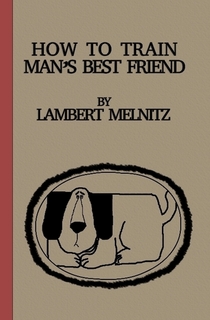Pat Moran says Training her dog is mostly about training the dog owner how to get the most out of the dog. It turns out there are some great lessons in how to treat staff.
I don’t know . . . . I hope this works. One of my all-time favorite movies is the classic Sandra Dee/Bobbie Darin romantic comedy , “If a Man Answers”. The premise, if you are too young to remember the movie is this: Socialite Sandra falls for and marries the wild fashion photog Bobbie. When they hit some newlywed bumps Sandra turns to her mom for advice.
Her French mother, married to a staid Boston Brahmin, reveals her secret: a little book titled, “How To Train Man’s Best Friend”. Everything Sandra needs to know, her mom tells her, is in this book. Recently we have been working with a trainer to smooth out the corners on training our Yellow Lab “puppy”. (He weighs well over 80 pounds at 9 months.)
We are constantly amazed at how simple the approaches seem to be. It is a bit sobering because working with a trainer is way more about getting us as dog owners to do the things that bring out the best in our dog. What does this have to do with managing senior communities and the people who work there? It’s simple, just follow the dog training rules:
- Be consistent. Don’t make your “subjects” have to guess what you want from them.
- Reward lavishly the behaviors you want.
- A pat on the head isn’t always enough, but it’s nice in between.
- Ignore the bad behaviors unless/until they are dangerous. (Can you afford to ignore that sock being chewed? How about the $300 shoe?)
- Set, and enforce, clear boundaries while allowing as much freedom and flexibility as possible.
- Yelling at me, belittling me or smacking me with a rolled up newspaper will only change my attitude, not my behavior.
I know that I respond better to these kinds of positive inputs and that negative inputs make me less productive. I believe your staff will, too.
If you like this article or even if you don’t, it would be a great honor to have you subscribe to our mailing list HERE.





